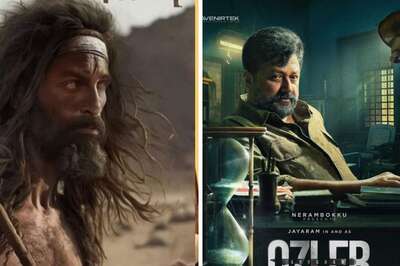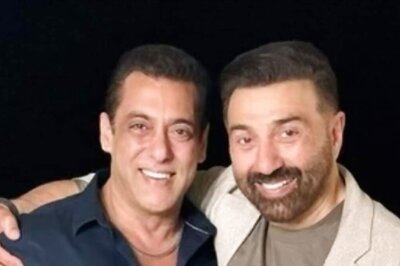
views
window._taboola = window._taboola || [];_taboola.push({mode: 'thumbnails-a', container: 'taboola-below-article-thumbnails', placement: 'Below Article Thumbnails', target_type: 'mix' });Latest News
UK-based Kathak-contemporary dancer Akram Khan and his company opened to high expectations here in the city as the last act of The Park’s New Festival and they most definitely didn’t disappoint. Right from the first half of the evening where Khan explored, in his own words, his spiritual side through three short kathak pieces, watching the company perform was an exhilarating experience.
If in ‘Polaroid Feet’, Khan danced with a well-balanced forceful grace that beautifully showed off his capabilities as a classical dancer and sound techniques, in Tarana, he transformed his feet into an entire range of percussion instruments, with his salangai obeying every command of his rhythmic feet.
Though he was the only performer on stage, because of the chemistry that he shared with his musicians, it was anything but a solo performance. They came alive together as a team, with the live music magically enhancing the entire experience. A definite highlight was the juxtaposition of traditional Indian instruments with the cello and Japanese taiko drums.
In the more contemporary fusion piece ‘Gnosis’ which premiered in 2009, Khan’s choreography was at it’s experimental best. Highly contrasting to his classical pieces in the first half, ‘Gnosis’ by Akram Khan not only turned out to be versatile, but also stretched the limits of what dance can do. Inspired by the Mahabharata, the choreography is based on Gandhari, king Dhritarashtra’s wife who blindfolds herself to go through what her blind husband was going through.
True to the meaning of ‘Gnosis’, Khan and his Taiwanese dance partner Fang-Yi Sheu explored the the many mysteries and truths that lie in spiritual experiences in the piece. They also portrayed the various complex battles that the human mind fights. Sheu, who plays Gandhari, beautifully portrayed the relationship of the queen with her son Duryodhana, known to be the most ruthlessly-motivated of the Kauravas.
Magnificently taking on the character of Gandhari, it is not wrong to say that Sheu possibly related with Khan’s choreography more than he himself did in certain places, with her strong and precise, yet graceful movements holding the audience in rapt attention.
As the two danced in perfect synchronisation within the framework of the brilliant lighting, one couldn’t help but realise that they were as good actors as they were dancers. Khan’s fluid movements were further accentuated by Sheu’s stoic, yet expressive maneuvering. As Gandhari was consumed by a fire that marks her death, and the recital drew to a finish, Khan sustainsed every palpitating emotion through his very puppet-like moves, like a man possessed. At the risk of sounding cliché, Khan’s repertoire was nothing short of poetry in motion.




















Comments
0 comment